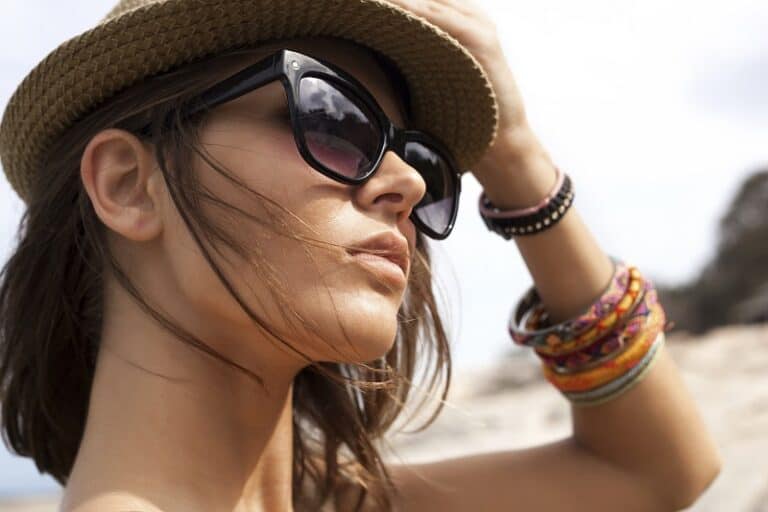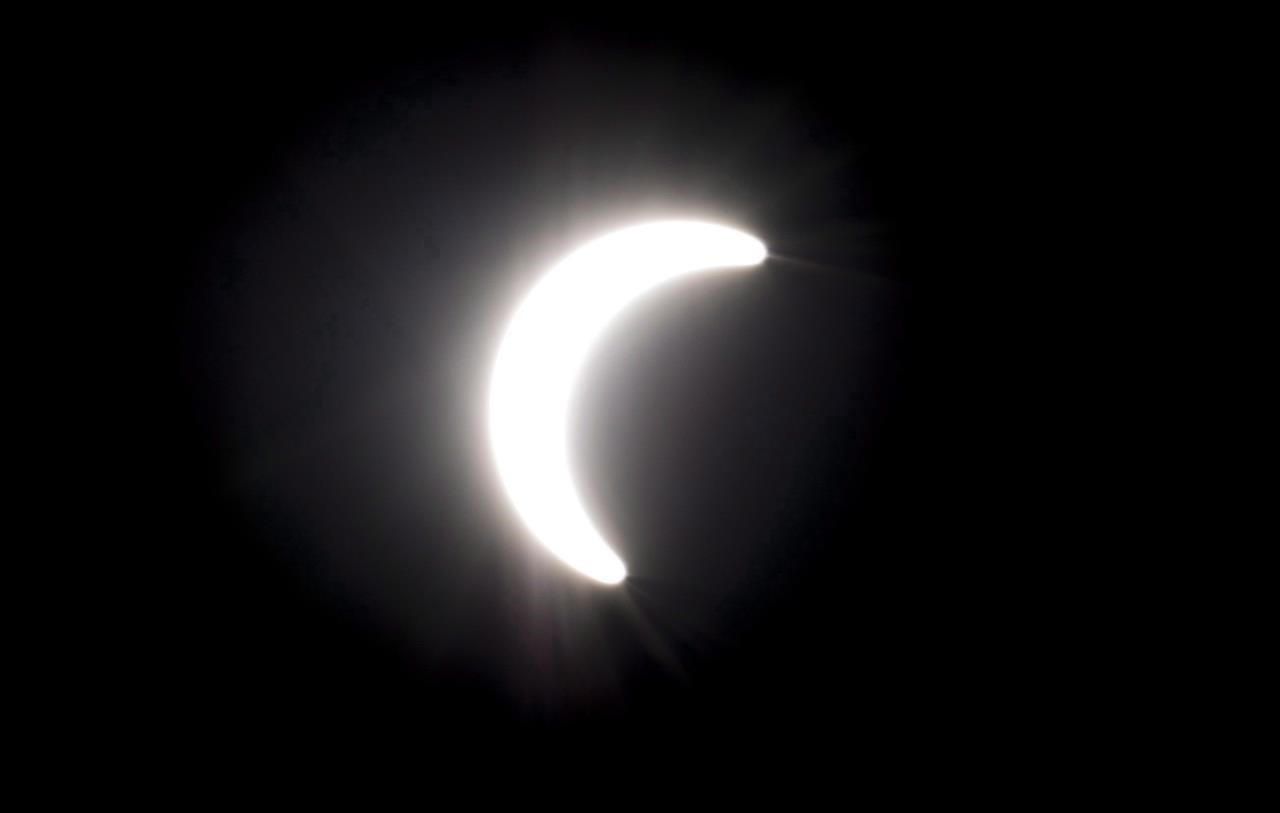Throughout history, eclipses have fascinated humanity with their mysterious allure. However, they also come with a unique set of risks. The question "is an eclipse more dangerous than looking at the sun" has intrigued many, as the celestial phenomenon can pose specific dangers that require careful consideration. Understanding these risks is crucial for anyone planning to observe an eclipse safely.
Eclipses, whether solar or lunar, are awe-inspiring events that captivate people around the world. However, solar eclipses, in particular, carry potential dangers that go beyond simply staring at the sun. This article will delve into the science behind these dangers, explain why eclipses can be harmful, and provide practical tips for safe observation.
By exploring the intricacies of solar eclipses and comparing the risks to direct sun exposure, we aim to equip you with the knowledge needed to protect your eyes and enjoy these celestial wonders without harm. Stay tuned as we unravel the facts and debunk common myths surrounding this fascinating topic.
Read also:Unveiling The Methodist Symbol Meaning A Comprehensive Guide
Understanding Solar Eclipses and Their Unique Risks
Solar eclipses occur when the moon passes between the Earth and the sun, temporarily blocking the sun's light. While this event is breathtaking, it also introduces specific dangers that differ from regular sun exposure. The primary concern during an eclipse is the potential for retinal damage caused by ultraviolet (UV) radiation.
During a partial or annular eclipse, parts of the sun remain visible, emitting intense UV rays that can harm the eyes. Even during a total eclipse, the brief moments before and after totality can expose observers to harmful radiation if proper precautions are not taken.
Why Are Eclipses Potentially More Dangerous?
- Eclipses create a false sense of safety, making people believe it's safe to look directly at the sun.
- UV radiation can cause permanent damage to the retina without immediate pain or symptoms.
- The natural dimming of sunlight during an eclipse can lead to prolonged exposure without realizing the danger.
These factors make eclipses particularly hazardous compared to regular sun exposure, where the brightness of the sun usually discourages prolonged staring.
Comparing Eclipse Risks to Direct Sun Gazing
While both activities involve looking at the sun, the risks associated with observing an eclipse are distinct. Direct sun gazing typically triggers discomfort and blinking reflexes, limiting exposure. In contrast, the gradual dimming of sunlight during an eclipse can override these natural protective mechanisms.
Studies show that during an eclipse, the human eye can be exposed to harmful UV radiation for longer periods without realizing it. This prolonged exposure increases the likelihood of retinal damage, a condition known as "eclipse blindness."
Key Differences in Risk Factors
- During an eclipse, the sun's brightness diminishes, reducing the natural aversion to looking directly at it.
- UV radiation during an eclipse can penetrate deeper into the eye, affecting the retina more severely.
- People may underestimate the danger due to the temporary dimming of sunlight.
These differences highlight the importance of taking extra precautions during an eclipse compared to regular sun exposure.
Read also:Unlocking The Secrets Of Lada 58 A Comprehensive Guide
Scientific Explanation of Eclipse-Induced Eye Damage
The human eye is highly sensitive to UV radiation, which can cause irreversible damage to the retina. During an eclipse, the combination of reduced brightness and prolonged exposure creates a perfect storm for eye injury. According to research published in the Journal of Ophthalmology, even brief exposure to UV radiation during an eclipse can lead to retinal burns.
Retinal damage occurs when UV rays penetrate the eye and are absorbed by the photoreceptor cells. This absorption generates free radicals that destroy cell structures, leading to permanent vision loss. Unlike sunburn on the skin, retinal damage often goes unnoticed until significant harm has occurred.
How UV Radiation Affects the Eyes During an Eclipse
- UV-A radiation penetrates deep into the retina, causing oxidative stress and cell death.
- UV-B radiation primarily affects the cornea and lens, but can still contribute to retinal damage during prolonged exposure.
- Infrared radiation emitted during an eclipse can exacerbate retinal damage by increasing thermal stress.
Understanding these mechanisms is crucial for developing effective protective measures during eclipse observation.
Practical Tips for Safe Eclipse Viewing
To enjoy an eclipse safely, it's essential to follow proper guidelines and use appropriate equipment. Here are some practical tips to protect your eyes:
Firstly, always use certified eclipse glasses that meet the ISO 12312-2 international safety standard. These glasses block 100% of harmful UV radiation and significantly reduce visible light, making it safe to observe the sun during an eclipse.
Secondly, avoid using homemade filters or ordinary sunglasses, as they do not provide adequate protection. Even high-quality sunglasses designed for regular use cannot block the intense UV radiation emitted during an eclipse.
Recommended Safety Equipment
- Eclipse glasses certified to ISO 12312-2 standards
- Telescopes or binoculars equipped with proper solar filters
- Pinhole projectors for indirect observation
These tools ensure safe observation while preserving the beauty of the eclipse experience.
Historical Perspectives on Eclipse Safety
Throughout history, various cultures have developed unique approaches to observing eclipses safely. Ancient civilizations, such as the Greeks and Chinese, recognized the dangers of direct sun exposure and developed methods for indirect observation.
In the modern era, advancements in optical technology have made safe eclipse viewing more accessible. The development of specialized filters and viewing equipment has significantly reduced the risks associated with observing these celestial events.
Evolution of Eclipse Safety Measures
- Early use of smoked glass and pinhole projection methods
- Introduction of specialized solar filters in the 20th century
- Development of modern ISO-certified eclipse glasses
These historical developments highlight humanity's ongoing efforts to balance scientific curiosity with safety during eclipse observations.
Common Myths About Eclipse Safety
Despite widespread awareness campaigns, several misconceptions persist about eclipse safety. One common myth is that it's safe to look at the sun during a total eclipse. While it's true that brief moments of totality may be safe, the transition periods before and after can still expose observers to harmful UV radiation.
Another misconception is that regular sunglasses provide adequate protection. However, even the darkest sunglasses cannot block the intense UV radiation emitted during an eclipse.
Debunking Eclipse Safety Myths
- It's unsafe to look at the sun during any part of a partial or annular eclipse.
- Homemade filters, such as CDs or smoked glass, do not provide sufficient protection.
- Even brief exposure to UV radiation during an eclipse can cause permanent eye damage.
Dispelling these myths is crucial for promoting safe eclipse observation practices.
Scientific Studies on Eclipse-Induced Eye Damage
Research conducted by leading ophthalmologists has provided valuable insights into the effects of eclipse-induced eye damage. A study published in the British Journal of Ophthalmology analyzed cases of eclipse blindness following the 1999 solar eclipse in Europe. The findings revealed that most cases occurred due to inadequate protective measures or prolonged exposure.
Another study conducted during the 2017 Great American Eclipse found that individuals using uncertified eclipse glasses were significantly more likely to experience retinal damage compared to those using ISO-certified equipment.
Key Findings from Scientific Research
- Uncertified eclipse glasses fail to block sufficient UV radiation, increasing the risk of eye damage.
- Prolonged exposure, even during partial phases, can lead to irreversible retinal injury.
- Early detection and treatment of eclipse-induced eye damage are crucial for minimizing long-term effects.
These studies underscore the importance of using proper protective equipment and following established safety guidelines during eclipse observations.
Global Guidelines for Safe Eclipse Observation
Various international organizations have developed comprehensive guidelines for safe eclipse observation. The American Astronomical Society (AAS) and the International Astronomical Union (IAU) recommend using ISO-certified eclipse glasses and following established safety protocols.
These guidelines emphasize the importance of educating the public about eclipse safety and promoting the use of certified protective equipment. Additionally, they recommend avoiding homemade filters and using reputable sources for purchasing eclipse glasses.
Key Recommendations from Global Organizations
- Always use eclipse glasses certified to ISO 12312-2 standards.
- Avoid using homemade filters or uncertified equipment.
- Follow established safety protocols for telescope and binocular use during eclipses.
Adhering to these guidelines ensures safe and enjoyable eclipse observation experiences.
Conclusion: Protecting Your Vision During an Eclipse
In conclusion, while eclipses are breathtaking celestial events, they pose unique risks that require careful consideration. The question "is an eclipse more dangerous than looking at the sun" can be answered affirmatively when proper precautions are not taken. The combination of reduced brightness and prolonged exposure during an eclipse creates a higher risk of retinal damage compared to regular sun exposure.
By following established safety guidelines, using certified protective equipment, and educating yourself about eclipse safety, you can enjoy these awe-inspiring events without compromising your vision. We encourage you to share this article with others and leave your thoughts in the comments below. Additionally, explore our other articles on astronomy and scientific topics to deepen your understanding of the universe.
Remember, protecting your eyes during an eclipse is not just about enjoying the event safely—it's about preserving your vision for future celestial wonders.
Table of Contents
- Understanding Solar Eclipses and Their Unique Risks
- Comparing Eclipse Risks to Direct Sun Gazing
- Scientific Explanation of Eclipse-Induced Eye Damage
- Practical Tips for Safe Eclipse Viewing
- Historical Perspectives on Eclipse Safety
- Common Myths About Eclipse Safety
- Scientific Studies on Eclipse-Induced Eye Damage
- Global Guidelines for Safe Eclipse Observation
- Conclusion: Protecting Your Vision During an Eclipse
- Additional Resources and References
Additional Resources and References
For further reading, we recommend the following resources:
- Journal of Ophthalmology - "Retinal Damage During Solar Eclipses"
- British Journal of Ophthalmology - "Eclipse Blindness: A Case Study"
- American Astronomical Society - Eclipse Safety Guidelines
These references provide valuable insights into eclipse safety and the science behind eye protection during celestial events.


